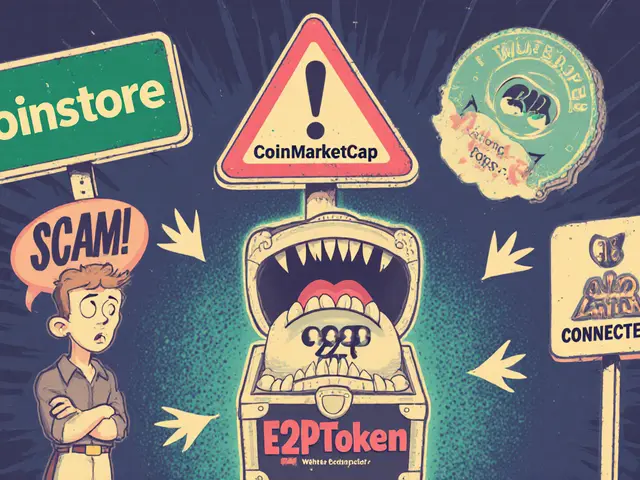
When you hear Security Token Offering, think of a modern, regulated way to raise capital using blockchain. In simple terms, a Security Token Offering (STO) is a fundraising event where a company issues digital tokens that represent a real‑world security-equity, debt, revenue share, or even ownership of a piece of real estate-on a blockchain. Unlike the wild west of utility‑token ICOs that flooded the market in 2017, STOs must follow the same securities laws that govern stocks and bonds, giving investors the protection they expect while still enjoying the speed and transparency of blockchain.
Why STOs Matter: Benefits Over ICOs and Traditional IPOs
Imagine you want to sell a slice of a $10million commercial building. With a traditional IPO, you’d need a lot of paperwork, costly underwriters, and a minimum investment that puts the deal out of reach for most everyday investors. With an ICO, you could mint a utility token and sell it quickly, but that token wouldn’t give any legal claim on the building and regulators could consider it an illegal security.
STOs sit in the sweet spot. They provide:
- Regulatory protection: Tokens are registered or qualified under securities laws (e.g., SEC registration in the U.S. or MAS licensing in Singapore), so investors get the same rights as traditional shareholders.
- Fractional ownership: Smart contracts enable you to split high‑value assets into tiny, affordable tokens, opening up investment to a broader audience.
- Speed and lower costs: Issuance, settlement, and secondary trading happen on a blockchain, cutting days‑long settlement cycles to minutes and slashing fees.
- Transparency: All token movements are recorded on an immutable ledger, making fraud far harder.
Because of these advantages, STOs have attracted serious players. tZERO raised over $130million through an STO, INX launched the first SEC‑registered security token IPO, and SPiCE VC now offers a tokenized venture‑capital fund.
Core Building Blocks of an STO
Launching an STO isn’t just flipping a switch. It requires seven interlocking components, each with its own technical and legal nuances.
- Underlying Asset: The real‑world property, equity, or revenue stream you’re tokenizing.
- Security Token: The digital representation of that asset, typically an ERC‑20 or ERC‑1400 token on Ethereum or a compatible network.
- Tokenization Platform: Software that converts the asset’s legal rights into code. Popular platforms include Polymath, Tokeny, and Securitize.
- Smart Contract: Self‑executing code that enforces ownership rules, dividend distribution, and transfer restrictions.
- Regulated Securities Marketplace: The exchange where compliant investors can buy and sell the tokens (e.g., tZERO, INX, InvestaX).
- Blockchain Network: The underlying ledger-Ethereum, Polygon, Stellar, or Kaia-that provides security and scalability.
- Digital Wallet: The tool investors use to store, receive, and transfer tokens, such as MetaMask, Coinbase Web3 Wallet, or Trust Wallet.
Each piece must be chosen with compliance and functionality in mind. For example, if you’re targeting U.S. accredited investors, you’ll likely need an Ethereum‑based token that supports KYC/AML checks built into its smart contract.
Regulatory Landscape: Who’s Watching and What You Must Do
Regulators treat security tokens exactly like traditional securities. That means you’ll need to navigate the rules of the jurisdiction where you’re issuing.
- Securities and Exchange Commission (SEC) (U.S.): Requires registration under the Securities Act of 1933 unless an exemption (RegA+, RegD, RegS) applies. Failure to register can lead to enforcement actions.
- Monetary Authority of Singapore (MAS): Issues a Recognized Market Operator (RMO) license for platforms like InvestaX. Token issuers must meet the MAS’s Fit‑and‑Proper criteria and anti‑money‑laundering standards.
- European Union: MiCA (Markets in Crypto‑Assets) is set to harmonize rules across EU members, demanding a prospectus for public token offerings.
- Other jurisdictions (Switzerland, Dubai, Japan) have their own securities frameworks, often offering sandboxes for fintech innovation.
Practical steps to stay compliant:
- Engage a securities‑law firm early to determine the appropriate exemption.
- Prepare a detailed prospectus that outlines the underlying asset, token economics, and rights of token holders.
- Implement KYC/AML checks in the token‑sale smart contract or via the marketplace.
- Obtain a legal opinion confirming the token qualifies as a security.
- File the necessary registration statements or exemption notices with the regulator.

Step‑by‑Step Blueprint to Launch Your Own STO
Below is a practical roadmap you can follow from idea to market.
- Define the Asset and Valuation: Identify what you’re tokenizing (e.g., a $5million commercial property) and get an independent appraisal.
- Choose a Jurisdiction: Decide where you’ll register-U.S., EU, Singapore, etc.-based on your target investor base.
- Legal Structuring: Work with counsel to create a Special Purpose Vehicle (SPV) that holds the asset and issues the security token.
- Select a Tokenization Platform: Pick a provider that supports the required compliance features (e.g., restricted transfer, on‑chain KYC).
- Develop the Smart Contract: Either use a platform’s standard contract (ERC‑1400) or commission a custom one that automates dividend payouts and transfer restrictions.
- Audit the Code: Hire a reputable security auditor (e.g., Quantstamp) to review the contract for vulnerabilities.
- Prepare Offering Documents: Draft the prospectus, private placement memorandum, and token‑sale terms.
- Regulatory Filings: Submit registration or exemption paperwork to the SEC, MAS, or other authority.
- Launch the Private Sale: Offer tokens to accredited investors first, often at a discount.
- List on a Regulated Marketplace: After the public offering, list the token on a platform like tZERO or INX for secondary trading.
- Ongoing Reporting: Provide regular financial statements and token‑holder updates to stay compliant.
Following these steps can reduce the risk of regulatory pushback and give your investors confidence.
Comparing STOs, ICOs, and IPOs
| Aspect | STO | ICO | IPO |
|---|---|---|---|
| Regulatory status | Security, must comply with securities law | Usually utility token, often unregulated | Highly regulated, requires SEC filing (U.S.) |
| Investor rights | Equity, debt, revenue‑share, or asset claim | No legal claim; access to product/service | Shareholder voting, dividends, liquidation rights |
| Typical platform | Regulated marketplace (tZERO, INX) | Public crypto exchanges (Uniswap, PancakeSwap) | Traditional stock exchanges (NYSE, NASDAQ) |
| Minimum investment | Often fractional, few hundred dollars | Can be as low as $10‑$50 | Usually tens of thousands of dollars |
| Speed of issuance | Days to weeks (blockchain + compliance) | Minutes to hours | Months to over a year |
Seeing the table side‑by‑side helps you decide whether an STO fits your capital‑raising goals. If you need regulatory safety and want to issue a true security, the STO wins. If you just need a quick community token, the ICO is faster but riskier. For large, established firms, an IPO still makes sense.

Risk Factors and Common Pitfalls
Even with the benefits, STOs carry unique challenges.
- Regulatory uncertainty: Laws evolve fast. A token deemed compliant today could face stricter rules tomorrow.
- Technical bugs: A flaw in the smart contract can lock up tokens or enable unauthorized transfers.
- Liquidity constraints: Not all regulated marketplaces have deep order books; early investors may struggle to sell.
- Valuation risk: Over‑valued assets can lead to disappointing returns, especially when token price is tied to illiquid real estate.
- Jurisdictional mismatch: Issuing to investors in multiple countries means complying with each set of securities laws.
Mitigate these risks by hiring experienced legal counsel, conducting third‑party code audits, and choosing a marketplace with proven secondary‑trading volume.
Future Outlook: Where STOs Are Headed
Industry analysts predict that STOs will capture a sizable slice of the $91trillion global securities market within the next decade. As regulators gain confidence, more jurisdictions will issue clear guidelines, making cross‑border token offerings smoother. Enhanced smart‑contract standards (ERC‑1400‑plus) are already adding features like automated compliance checks and on‑chain voting.
Institutional interest is also on the rise. Major banks are piloting token‑based custody solutions, and asset managers are experimenting with tokenized real‑estate funds. This institutional push will bring deeper liquidity and more robust market infrastructure.
For issuers, the message is clear: if you can navigate the compliance maze, tokenizing assets offers a powerful way to unlock capital that traditional finance can’t match. For investors, STOs provide a regulated path into high‑value assets that were once out of reach.
Frequently Asked Questions
What makes a security token different from a utility token?
A security token represents an actual financial right-ownership, dividend, or debt-subject to securities regulation. A utility token simply grants access to a product or service and is generally not regulated as a security.
Do I need to be an accredited investor to buy STOs?
Not always. Some STOs are offered under exemptions like RegA+ that allow non‑accredited investors, but many early offerings target accredited investors only due to stricter compliance requirements.
Which blockchain is best for launching an STO?
Ethereum is the most widely used because of its mature tooling and standards (ERC‑1400). However, Polygon and Stellar offer lower fees, while Kaia provides faster finality-choose based on cost, speed, and regulator acceptance.
How are dividends paid to security‑token holders?
Dividends can be automated via the token’s smart contract: the issuer sends fiat or stable‑coin to the contract, which then distributes proportional amounts to each holder’s wallet.
What are the biggest regulatory hurdles for an STO in the U.S.?
The primary hurdle is registration with the SEC unless an exemption applies. This involves filing a detailed prospectus, conducting KYC/AML on investors, and ensuring the token’s transfer restrictions comply with the securities law.





Comments (20)
Marques Validus
Security token offerings blend capital market compliance with blockchain efficiency.
The tokenization engine encodes the underlying equity into an ERC‑1400 smart contract.
Regulatory due diligence mandates KYC/AML integration at the purchase gateway.
Issuers must provision a legal opinion confirming that the digital instrument qualifies as a security.
Prospectus drafting now includes on‑chain token economics alongside traditional financial statements.
Auditors scan the bytecode for re‑entrancy vulnerabilities before the public sale.
Investors benefit from fractionalized ownership, which reduces the entry barrier to hundreds of dollars.
Settlement finality occurs in minutes, cutting the T+2 window to near‑instantaneous transfer.
Secondary liquidity is facilitated by regulated marketplaces that enforce transfer restrictions per jurisdiction.
Compliance tags embedded in the token metadata trigger automatic lock‑up periods for non‑accredited buyers.
Platform providers like Polymath and Securitize offer pre‑built KYC modules to streamline onboarding.
The SEC's Reg D exemption remains the most common pathway for U.S. issuers.
However, Reg A+ opens the door for non‑accredited participation under tighter disclosure rules.
Cross‑border offerings must reconcile multiple securities regimes, often requiring parallel registrations.
Ultimately, the convergence of legal rigor and decentralized infrastructure unlocks capital for assets that were previously illiquid.
Michael Bagryantsev
Well said, the compliance‑tech synergy is the real game‑changer here.
Maria Rita
Reading through this guide felt like getting a backstage pass to the future of finance.
I love how the step‑by‑step blueprint demystifies the legal maze.
The emphasis on a solid legal opinion really drives the point home.
Remember, every token is only as good as the smart‑contract audit behind it.
Keep the momentum and happy tokenizing!
Jordann Vierii
Great rundown!
What really excites me is the cultural shift – we’re turning real‑world assets into digital community treasures.
Even if the tech sounds heavy, the core idea is simple: protect investors while unlocking liquidity.
Just make sure your wallet is ready for the ride.
Della Amalya
Spot on, the blend of regulation and blockchain is a win‑win.
It’s dramatic how quickly settlements drop from days to minutes.
But don’t forget the paperwork – a missed filing can stall the whole process.
Stay diligent and the payoff is huge.
Kim Evans
👍 Super helpful overview!
If you’re new, start with a reputable tokenization platform – they handle most of the compliance heavy‑lifting.
Also, always run a security audit; a single bug can lock investors out.
Good luck building your STO! 😊
Isabelle Graf
This is just another buzzword parade, nothing new.
Millsaps Crista
I respect the detail, but remember that tokenizing real estate still needs a solid on‑ground partner.
Don’t chase the hype; make sure the underlying asset is vetted.
That’s the real key to success.
Shane Lunan
Looks like another compliance checklist.
Jeff Moric
Appreciate the thoroughness – especially the part about ongoing reporting.
It’s easy to forget that compliance doesn’t end at token issuance.
Continuous disclosure builds trust with investors.
Bruce Safford
Honestly, the SEC is probably already planning to shut these down – they can’t handle the decentralization wave.
Keep your eyes open for hidden regulatory traps.
Shauna Maher
STOs are just a fancy re‑branding of old securities, nothing revolutionary.
John Beaver
Before you launch, make sure the smart contract code is audited by a reputable firm.
Even a tiny bug can cause big loss.
EDMOND FAILL
Interesting read – the step‑by‑step layout really helps newcomers visualize the process.
Tayla Williams
Whilst the exposition is exhaustive, one must remain vigilant regarding the evolving jurisprudence across jurisdictions; the volatility of regulatory stances dictates a prudent, iterative compliance strategy.
Mitch Graci
Wow!!! This guide is sooo thorough!!! Can't wait to start tokenizing my grandma's house!!! 😂😂😂
Michael Grima
Cool guide, but remember: crypto is a wild west. Don't get burned.
Lesley DeBow
Great insights. No emojis needed.
Cynthia Chiang
Love how the post breaks down the legal jargon into plain English.
It makes the whole STO concept feel approachable for startups.
Thanks for sharing!
Hari Chamlagai
From a strategic standpoint, the tokenization of assets is inevitable; any delay in adoption merely cedes competitive advantage to early movers.
Therefore, aligning with a compliant platform now is essential.